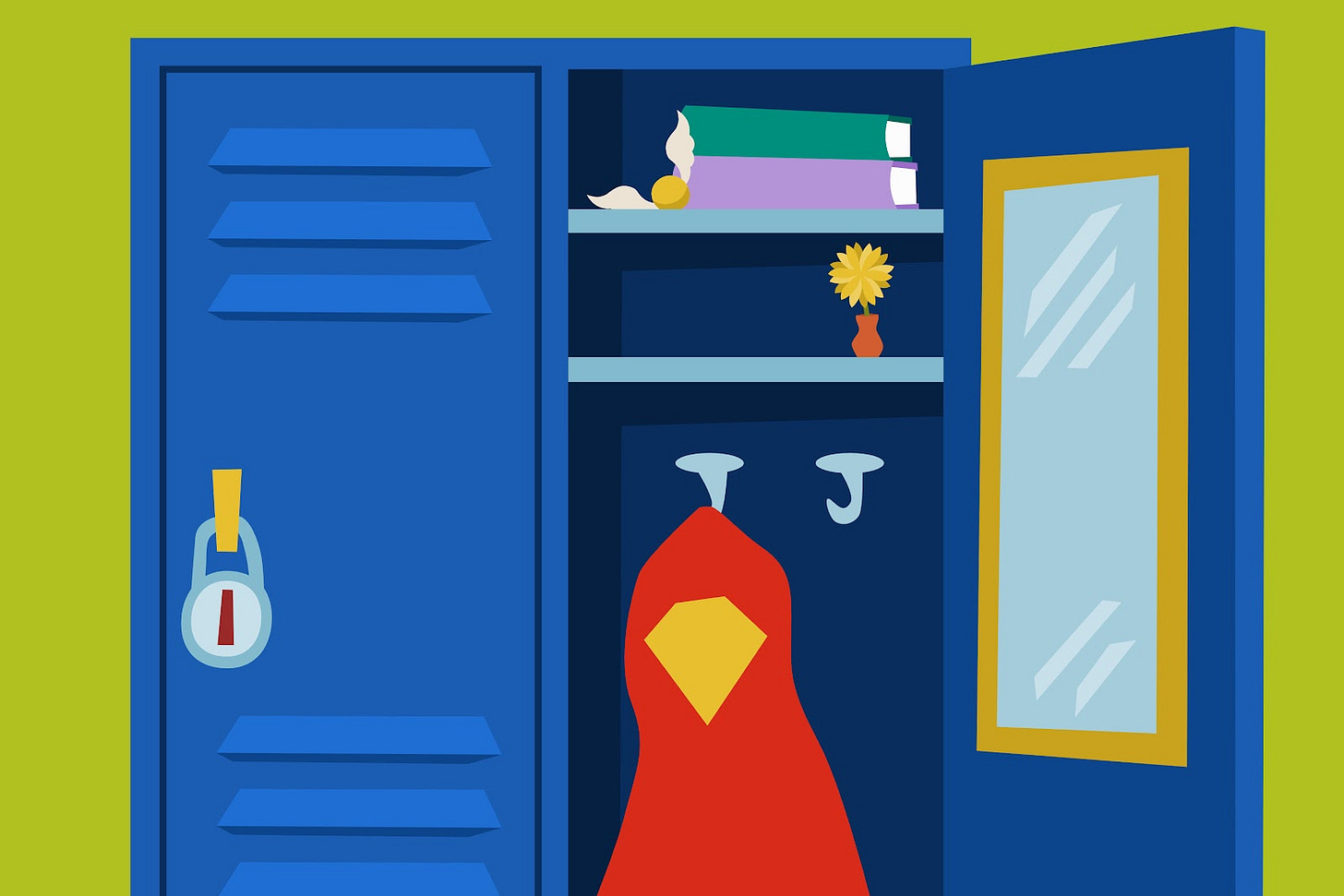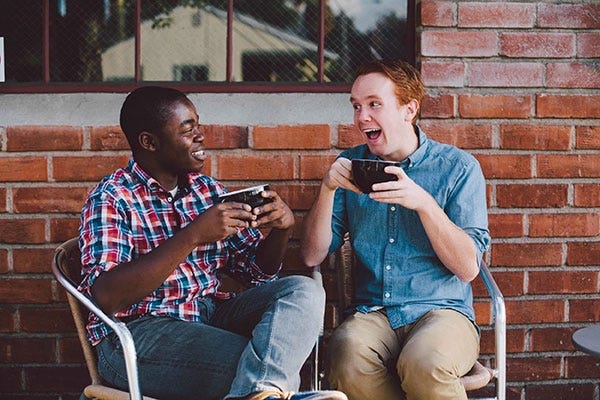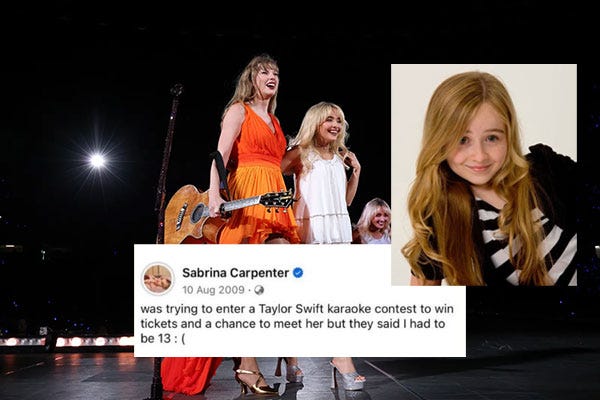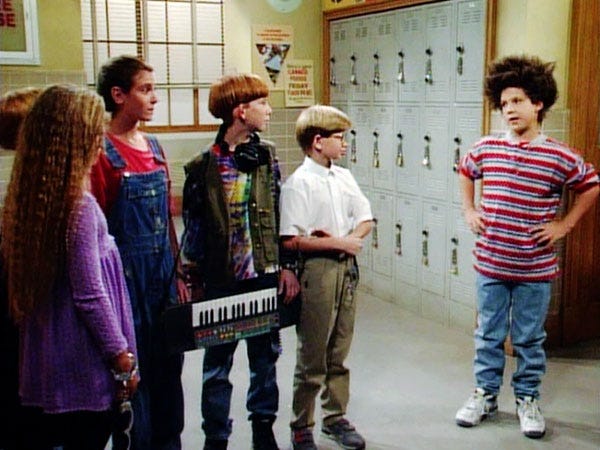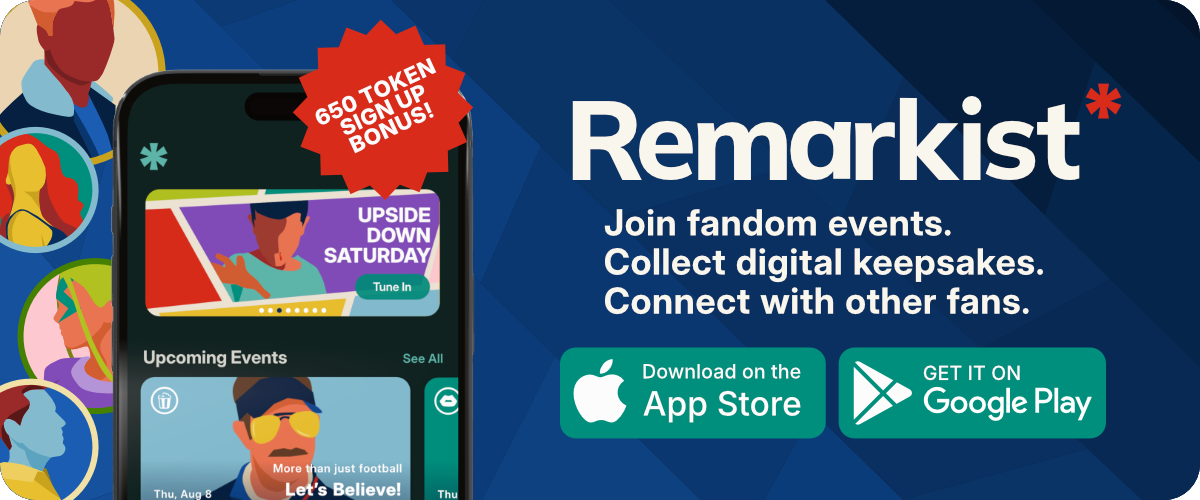How Childhood Pop Culture Builds Identity, Belonging, and Resilience
The fandoms of our youth inform who we are
The popular podcast Las Culturistas hosted by Bowen Yang and Matt Rogers is centered around pop culture and fandom evolution. When the two have celebrity guests on the show, they always ask a central question: “What is the culture that made you say, ‘culture is for me’?” It’s a great way to get to know someone: what pop culture moved you, when, and why is it central to who you are as a person?
I’ve often asked myself this question, and what I’d say if I were lucky enough to be interviewed by Bowen and Matt. I find it hard to narrow it down: Was it when I first saw Full House and kids my age being funny on my television? Was it when my mom played Billy Joel’s greatest hits in the car on the way to school? Was it when someone put a Babysitter’s Club book in front of me? Was it when I saw The Little Mermaid in movie theaters with 5 of my best gal pals in the fourth grade? Maybe it seeing 42nd Street on Broadway as a young tap dancer myself, igniting a lifelong obsession with musical theater. All of these early cultural moments impacted me so deeply that I still think of them often in the context of my current fandoms.
Early fandoms stick with us, even if we grow out of them (for the record, I have not grown out of any of the above fandoms). They turn us on to pop culture itself, and therefore set us up for further appreciation of fandoms that come our way throughout our adult lives. Here are some ways that our early fandoms help shape our identity.
Core Identity Formation
As kids, we’re always exploring. When we find something that strikes our fancy, we fixate. So when we find a character we love, or a story we identify with, we internalize the values we are presented with. Fans of comic books as kids often cite feelings of belonging when they feel like an outsider like their favorite superheroes, or belief in good versus evil prevailing as a reason they feel connected to those narratives. I can tell you why I loved the Babysitter’s Club books so much: I saw myself in so many of the characters and I could see how their different personalities and skill sets could contribute to the whole. I fancied myself a Mary-Anne crossed with a Stacey: bookish, best friends with everyone, bubbly, and pensive. But I admired Kristy so much for her organization, toughness, and her entrepreneurial spirit and Claudia for her artistic creativity and openness to everyone. I started to see what personality traits came most naturally to me, and which ones I wished I possessed. In all that reflection, I found my own identity.
Social Belonging and Community Memory
On social media, thousands of nostalgia accounts permeate the fandom space. I myself am served tons of nostalgia fandom every day, from American Girl to the Spice Girls. Nostalgic pop culture posts may make an inside joke about an older fandom, or celebrate it with “remember this?” language in captions, and are circulated widely because yes: so many people remember. It’s unifying to know that strangers can connect over pop culture moments of the past in a way they don’t on other topics; collective memory makes us feel like we belong to something bigger than ourselves. I loved the “I Love the 90s” TV show on VH1, a retrospective on all things pop culture of the 1990s. The series covered other decades as well, and these shows highlighted a collective history of pop culture. They spoke to a unified understanding of nostalgia, around which we can build community. The success of rewatch podcasts like Gilmore Guys, Office Ladies, and Pod Meets World speaks to this phenomenon: folks love to gather around others who share the fandoms of their past because it means we all have something in common and at least one similar entry point into understanding the world.
Creative and Professional Pathways
Our early fandoms often inspire us to pursue creative or professional outlets later on in life. How many times have you heard a movie director wax poetic about the first film they saw? Sabrina Carpenter has shared her intense fandom for Taylor Swift at a young age, singing her songs as a child–and now she’s gone on tour with Taylor and will be featured on The Life of a Showgirl, Swift’s upcoming album–in addition to becoming a massive superstar herself. I have both family and friends who were Disney fans as kids and went on to work at Disney theme parks as adults. My own love of reading books as a child led me to want to work in libraries or at a publisher some day–a dream I eventually realized.
In addition to career paths, our first fandoms might have inspired us to write fan fiction or create content, building skills we use as adults. These early tools of self expression serve us well later in life and may turn into lifelong hobbies that keep us grounded and curious.
Values and Worldview
Did you agree or disagree that Ross and Rachel were on a break? Were you Team Dean, Team Jess or Team Logan because of how “good” of a boyfriend they were to Rory? For the Millennials and Gen X folks, did a Very Special Episode of your favorite drama or sitcom that dealt with a sensitive social issue affect your view of the world? Were you incensed with the belief that Donna Martin should graduate?! Our early fandoms present us with worldviews that we are invited to question. We often find fandom outside of our family and friend circles, and a TV show or a book can both be a window to a world we don’t know anything about and help us examine how we really feel about specific issues or scenarios.
An early episode of Boy Meets World, “Cory’s Alternative Friends,” had a huge impact on me. I now know the episode was (and is) a fan favorite–at the time, I thought I was the only person in the world who taped it and watched it 100 times. In the episode, Cory is made to feel bad about his curly hair due to lots of ribbing from his friends and classmates. At the same time, he is paired with the eccentric Topanga, who doesn’t seem to care what others think of her. While Cory tries–and fails spectacularly–to straighten his hair, his plan to blend in is thwarted. But Topanga finds him interesting, even resulting in a first kiss for them both–proof that “looking weird” and not caring too much about others’ opinions might lead you to a connection you never saw coming. I learned at a young age that it was ok to be different, and that giving someone I felt was “weird” a chance could open my world, teach me something new, and gain me a new friend.
Nostalgia, Resilience, and Coping
It’s easier than ever to engage with the fandoms of our youth in the world of streaming. I love that I can turn on my television and watch shows that were popular when I was under the age of 10, and open an app on my phone to listen to pre-selected playlists from when I was a preteen. We all have nostalgia shows and comfort characters that we return to when we need to regroup. Sometimes it’s fan communities that we feel connected to; the Hanson fandom has been communicating online with one another for decades–Millennials were the first teenagers to use the internet widely and fans who found their tribes then still connect with them now in similar spaces. Returning to the fandoms we loved at a young age can provide a feeling of safety and memories of a simpler time, or maybe remind us of our core values and identities when we’re feeling a bit lost or stressed. I myself will often turn to Dawson’s Creek or Gilmore Girls, shows I loved as a teenager, when I feel like the world is a bit too much. I can escape into the fictional idyllic towns of Capeside or Stars Hollow, put myself in young Joey or Rory’s shoes, and forget that I have a complicated adult life. Our early fandoms remind us who we are when we need a reset, and help us cope with the challenges we face as adults. Revisiting early fandoms also bring us childlike joy–it’s why adults love to go to Disney World or ComicCon or hold onto books and toys they loved as a kid. And joy is a way to build resilience.
Want to do more with your fandom? Our Discord is where you’ll find everything you need to know about our fandom-forward ecosystem at Remarkist! Don’t forget to follow us on Instagram, tumblr, and Spotify for more storyworld content—and hit that subscribe button so you never miss a thing at rmrk*st Mag!




